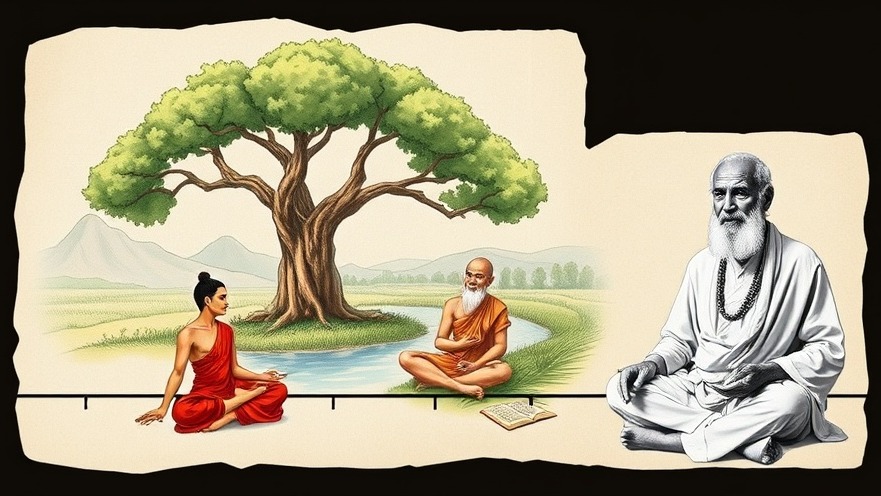
Understanding Transcendental Meditation and Mindfulness: Which Is Right for You?
Meditation is no longer reserved for monks in far-off monasteries or yoga teachers on mountaintops. These days, you’re just as likely to hear about it in a corporate boardroom as you are in a wellness studio.
Stress is high, attention spans are short, and people everywhere are searching for ways to feel calmer and more connected.
But here’s the catch: there isn’t just one “right” way to meditate. In fact, there are dozens. Two of the most talked-about—and sometimes confused—methods are Transcendental Meditation (TM) and mindfulness meditation.
At first glance they might look similar, but the experience of practicing them can feel worlds apart. So which one is best for you? Let’s take a closer look.
A Quick Trip Back in Time
Meditation has deep roots. Thousands of years deep.
Mindfulness meditation grew out of Buddhist traditions. It was designed as a way to train the mind to stay present—whether sitting still or moving through daily life. In the West, mindfulness really took off in the late 1970s, when Jon Kabat-Zinn introduced Mindfulness-Based Stress Reduction (MBSR) at the University of Massachusetts Medical School.
Transcendental Meditation, on the other hand, comes from the Vedic tradition of India. Maharishi Mahesh Yogi introduced it to the world stage in the 1950s and 60s. If the Beatles or Oprah talking about TM rings a bell, you’re already seeing how this practice spread far beyond its roots.
Both practices carry spiritual depth, but you don’t have to be religious to benefit from them.

The Experience of Transcendental Meditation
Imagine sitting in a chair, closing your eyes, and repeating a single sound in your mind. That’s the heart of TM.
Your teacher gives you a mantra—a word or syllable with no meaning—chosen specifically for you.
You silently repeat it, and without forcing anything, your mind begins to drift into a quieter place. Thoughts don’t disappear completely, but they lose their grip. It’s like sinking below the surface of choppy water into stillness underneath.
Most TM practitioners meditate 20 minutes twice a day. That structure is part of what people love: you know exactly when, how long, and what to do.
Supporters describe the benefits in glowing terms: deeper rest, reduced anxiety, bursts of creativity, even more patience with family or coworkers.
Science agrees to some extent—clinical trials show TM can help lower blood pressure, reduce stress hormones, and support mental clarity.
One caveat? Learning TM isn’t free. Certified instruction, which is considered essential for authentic practice, usually comes with a significant price tag.
The Simplicity of Mindfulness Meditation
Now picture something different: you’re sitting quietly, noticing your breath. Air flows in, air flows out. Your mind wanders—of course it does. You gently notice it, then return to the breath. Over and over.
That’s mindfulness.
There’s no mantra, no secret formula. Just awareness of the present moment. You might notice the feel of your hands in your lap, the hum of traffic outside, or the rise of irritation when your phone buzzes. The practice is about observing without judgment.
Mindfulness can be short or long, structured or casual. Five minutes at your desk?
Great. A 45-minute guided meditation in a community class? Also great. The accessibility is part of the appeal. With apps like Calm or Headspace, it’s easier than ever to start.
The research behind mindfulness is vast. Studies link it to reduced rumination, better emotional regulation, improved sleep, and lower levels of anxiety and depression.
Unlike TM, it’s something you can dip into without a teacher, though guidance often helps at first.

Two Different Roads to the Same Goal
If you’re trying to understand the difference, here’s one way to think of it:
TM is like diving deep under the waves. The mantra helps you slip beneath the noise of daily thoughts into a place of deep rest.
Mindfulness is like standing on the shore. You’re watching the waves roll in and out, noticing each one as it comes, but staying steady in your awareness.
Structure vs. Flexibility
TM offers a clear routine and professional instruction.
Mindfulness can be picked up anytime, anywhere, with or without formal training.
Cost
TM requires an investment in certified teaching.
Mindfulness is often free or low-cost, especially with online resources.
Focus
TM emphasizes transcending thought.
Mindfulness emphasizes observing thought.
Both paths lead toward greater calm, but the scenery along the way is different.
Which Practice Might Fit You?
Choosing comes down to personality and goals.
If you want a reliable structure and don’t mind paying for formal teaching, TM might feel like home. It’s especially appealing if you’re looking for something to plug into your daily routine without much flexibility.
But if you prefer an open, self-guided approach—or if you want a tool you can use on the go—mindfulness may be the better fit. You can practice while waiting in line, during a stressful commute, or right before bed.
Some people even combine both: TM for deep rest, mindfulness for everyday awareness.
Emotional Wellness Benefits
Both practices shine when it comes to mental health, though in different ways.
TM tends to calm the nervous system, helping people recover from stress and feel restored. Studies have shown significant drops in cortisol, the “stress hormone,” after regular TM practice.
Mindfulness gives you tools to meet your emotions head-on. Instead of being swept away by anger or worry, you learn to observe what’s happening and respond thoughtfully.
In other words: TM is like giving your brain a long exhale, while mindfulness is like learning to breathe steadily no matter what’s happening around you.

Busting Common Myths
A lot of beginners hesitate to try meditation because of misconceptions.
“I need to empty my mind.” Not true. Minds think—that’s what they do. Meditation isn’t about stopping thoughts, but relating to them differently.
“I don’t have 30 minutes.” You don’t need that long. Even a few mindful breaths before a meeting can make a difference.
“It’s too spiritual for me.” While both TM and mindfulness have spiritual roots, people from all backgrounds—including healthcare providers—use them today as practical tools for stress relief and well-being.
Taking the First Step
If you’re curious about TM, the best place to start is through the official TM organization, where certified teachers can walk you through the process.
If mindfulness is calling your name, you can try a guided meditation today. Open YouTube, download a free app, or simply close your eyes and focus on ten slow breaths.
There’s no medal for choosing the “best” practice. What matters is what feels right for you—and what you’ll actually enjoy enough to keep doing.
Final Word
Both Transcendental Meditation and mindfulness are doorways to greater calm, clarity, and resilience. TM offers a structured dive into deep rest. Mindfulness invites you to embrace each moment with curiosity.
Whichever you choose, you’re taking a step toward more peace in your day and more balance in your life. And that’s a journey worth starting.
Looking for ways to stress less and stay centered? Visit Mind Matters for quick mindfulness tips, then head back to Sacramento Living Well for more ways to feel your best every day.
---
Authored by the Sacramento Living Well Editorial Team — a publication of DSA Digital Media, dedicated to highlighting wellness, local living, and inspiring community stories throughout Greater Sacramento.
 Add Row
Add Row  Add
Add 





Write A Comment